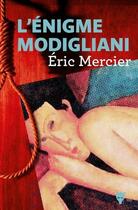-
Date de parution : 26/08/2011
-
Editeur :
Peter Lang Ag
-
EAN : 9782807601918
-
Série :
(-)
-
Support :
Poche
Résumé:
In 1961, Martin Esslin named a body of plays that lacked plot, character depth, and details of time and space the "Theatre of the Absurd". Esslin explained that this type of theatre, minimalist in the extreme, constituted a response to the existential crisis of Europe, which was in the midst of... Voir plus
In 1961, Martin Esslin named a body of plays that lacked plot, character depth, and details of time and space the "Theatre of the Absurd". Esslin explained that this type of theatre, minimalist in the extreme, constituted a response to the existential crisis of Europe, which was in the midst of recovering from World War II. But the fact that this body of theatre lacked details of time and space means that we may break the ties that anchor the Theatre of the Absurd irremediably to the historical context of post-World War II Europe. How can the Theatre of the Absurd speak meaningfully to us in the twenty-first century? This book explores this question by combining the avant-garde that Martin Esslin named in 1961 in his signature work The Theatre of the Absurd with gender studies, queer theory, and psychoanalysis, and avant-garde studies. The Theatre of the Absurd is capable of subverting post-millennial institutions and ideologies, including the Prison Industrial Complex and the West's domination of the Islamic world in a post-9/11 era.
Donner votre avis















